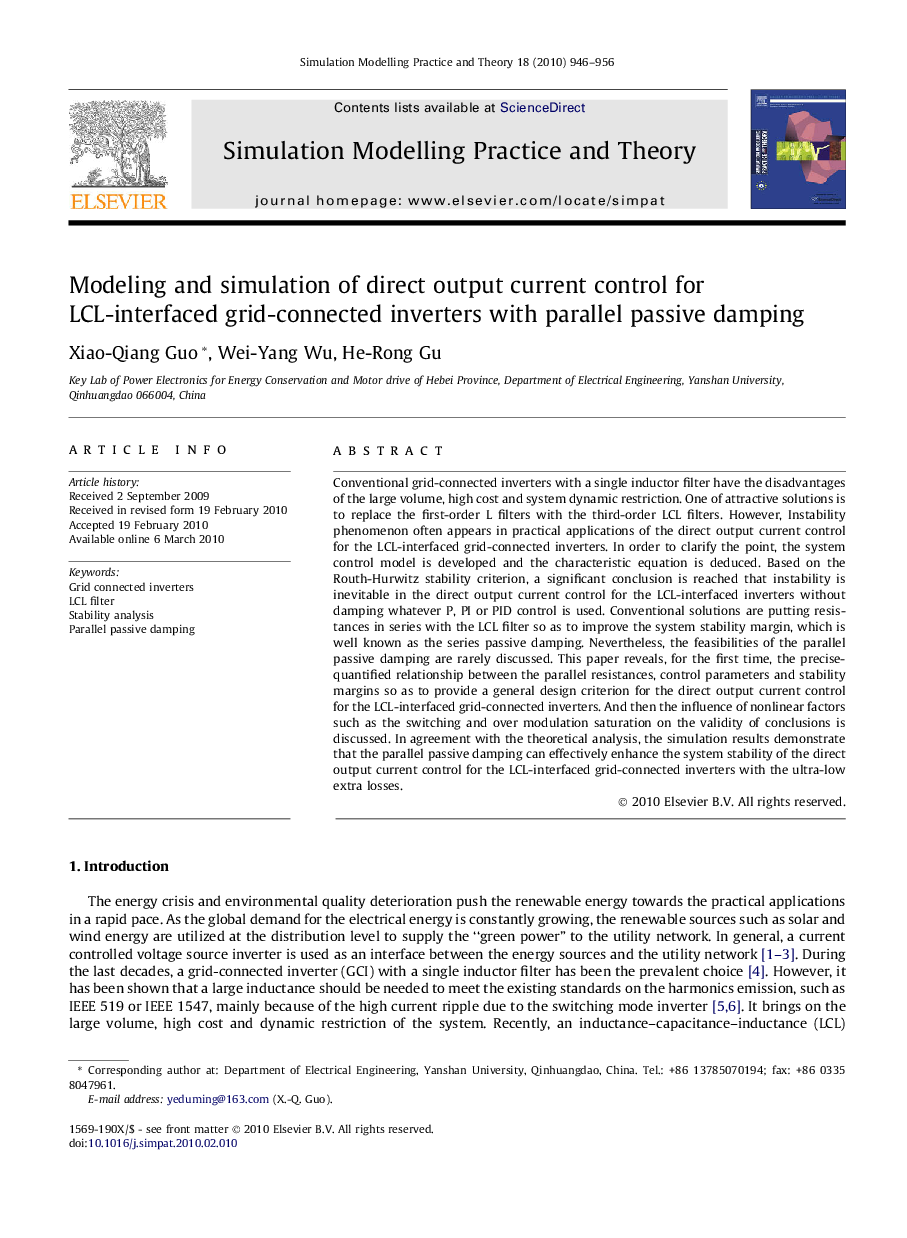| Article ID | Journal | Published Year | Pages | File Type |
|---|---|---|---|---|
| 492048 | Simulation Modelling Practice and Theory | 2010 | 11 Pages |
Conventional grid-connected inverters with a single inductor filter have the disadvantages of the large volume, high cost and system dynamic restriction. One of attractive solutions is to replace the first-order L filters with the third-order LCL filters. However, Instability phenomenon often appears in practical applications of the direct output current control for the LCL-interfaced grid-connected inverters. In order to clarify the point, the system control model is developed and the characteristic equation is deduced. Based on the Routh-Hurwitz stability criterion, a significant conclusion is reached that instability is inevitable in the direct output current control for the LCL-interfaced inverters without damping whatever P, PI or PID control is used. Conventional solutions are putting resistances in series with the LCL filter so as to improve the system stability margin, which is well known as the series passive damping. Nevertheless, the feasibilities of the parallel passive damping are rarely discussed. This paper reveals, for the first time, the precise-quantified relationship between the parallel resistances, control parameters and stability margins so as to provide a general design criterion for the direct output current control for the LCL-interfaced grid-connected inverters. And then the influence of nonlinear factors such as the switching and over modulation saturation on the validity of conclusions is discussed. In agreement with the theoretical analysis, the simulation results demonstrate that the parallel passive damping can effectively enhance the system stability of the direct output current control for the LCL-interfaced grid-connected inverters with the ultra-low extra losses.
